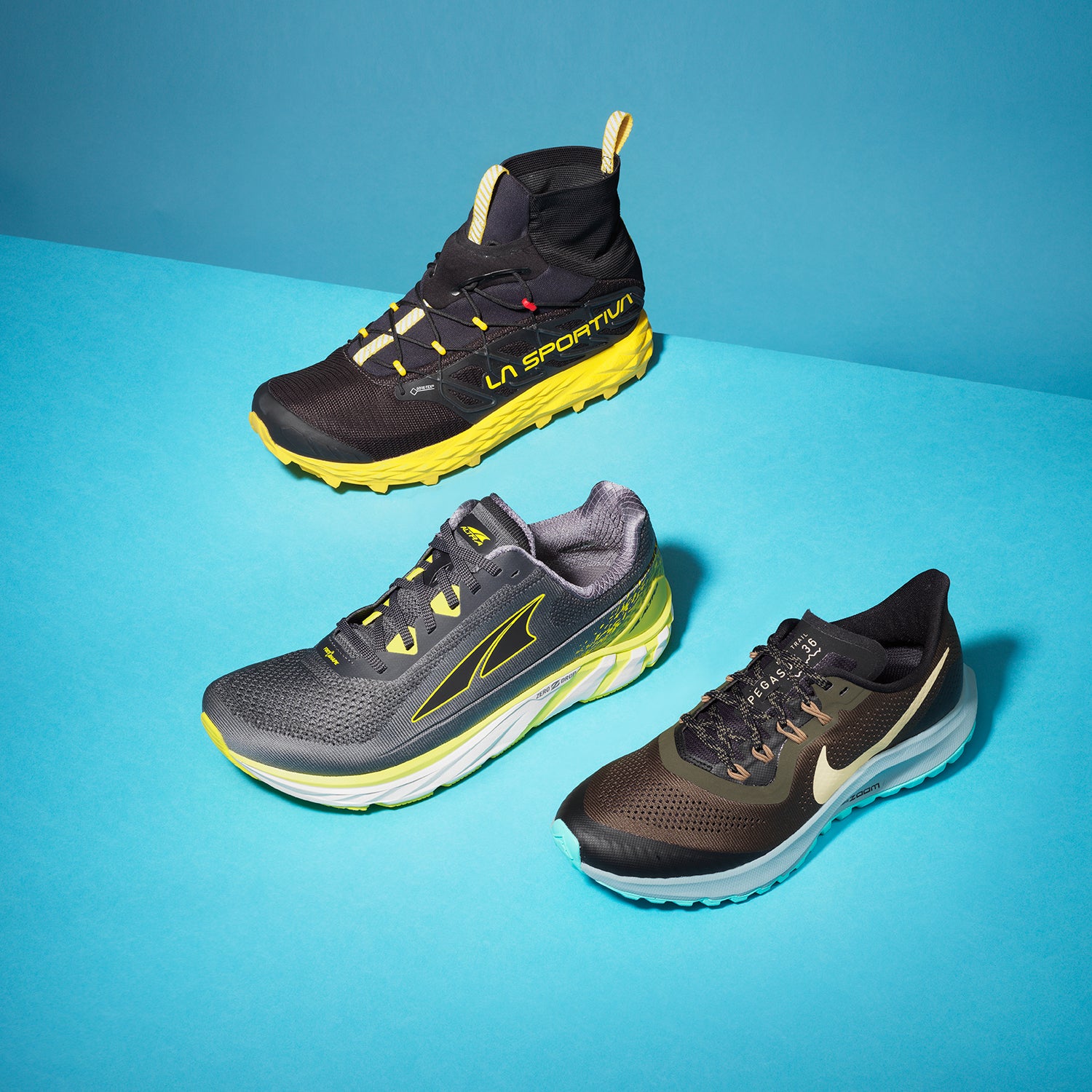Hoka One One Carbon X ($180)
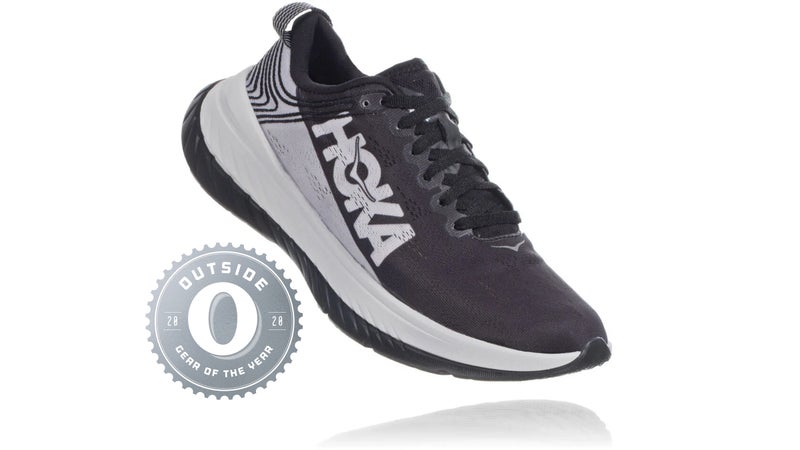
Let the carbon-fiber running-shoe craze begin. Not long after Nike successfully incorporated the superlight material into its trainers, Hoka and New Balance jumped into the ring, too. Round one went to the 2018 Gear of the Year–winning Nike Zoom Fly. Round two belongs to Hoka’s Carbon X. Whereas the Zoom Fly is better suited to forefoot-striking elite athletes, the Carbon X is the everyday runner’s superhero cape. Hoka’s rocking-chair-like outsole propels heel and midfoot strikers onto their toes, maximizing launch. And that classic Hoka cush—a combination of soft EVA foam between the carbon plate and your foot, together with a firmer, rubbery variety below—delivers a smooth, responsive ride. The wide platform provides more stability than the shoe’s neutral designation would suggest, while the mesh upper is airy and saves weight. Bottom line: the Carbon X isn’t as fast as its Nike counterpart, but it’ll have far more runners learning to fly. 8.5 oz (men’s, pictured) / 7.2 oz (women’s); 5 mm drop
��
La Sportiva Blizzard GTX ($199)
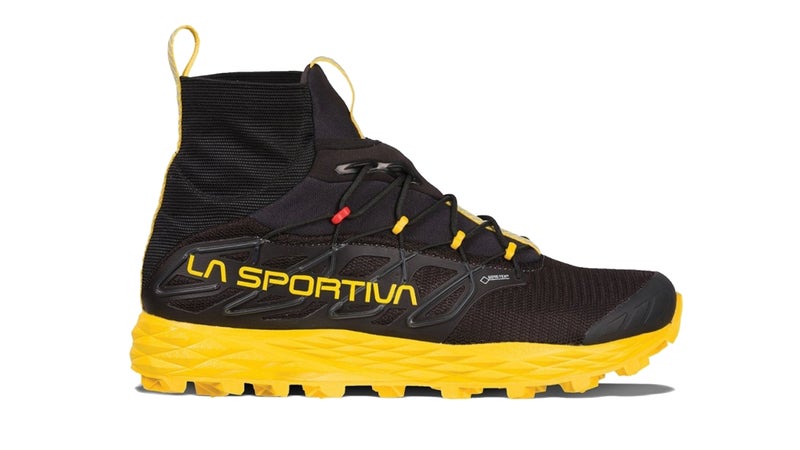
Best for Snow
If the thought of a snowstorm makes you hungry for adventure, here’s your shoe. Equipped with nine tungsten-alloy hobnails built into seven-millimeter lugs, the Blizzard GTX serves up bomber traction and doesn’t feel like a lead block encasing your foot. (At 13.3 ounces, it’s also lighter than strapping snow spikes to a standard trail runner.) The Gore-Tex upper, with a stretchy, integrated gaiter, ensures dry, comfortable feet, while fused overlays and a foot-hugging lacing system kept us connected to the midsole even in sloppy conditions. 13.3 oz; 6 mm drop
Altra Torin 4 Plush ($140)
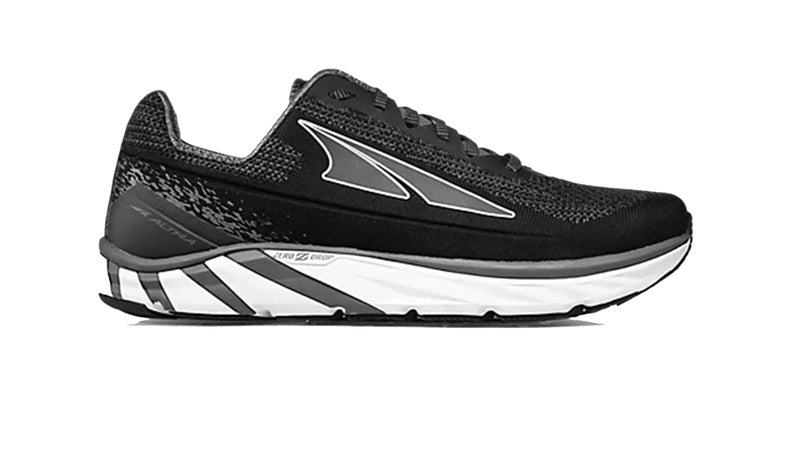
Best for Long Runs
A top-to-bottom redesign, the Torin 4 Plush was testers’ top choice for pillowy cushioning. Altra updated it with a Quantic midsole—a proprietary EVA blend that’s light, soft, and responsive without feeling mushy. Other changes include deeper flex grooves in the outsole, allowing the shoe to move more naturally with your stride. Even testers who were zero-drop skeptics noted how enjoyably soft the Torin 4 Plush felt. If you’re intrigued by flat-bottom running shoes, this is the perfect gateway drug. 10.1 oz (men’s, pictured) / 8.5 oz (women’s); zero drop��
��
Nike Air Zoom Pegasus 36 Trail ($130)
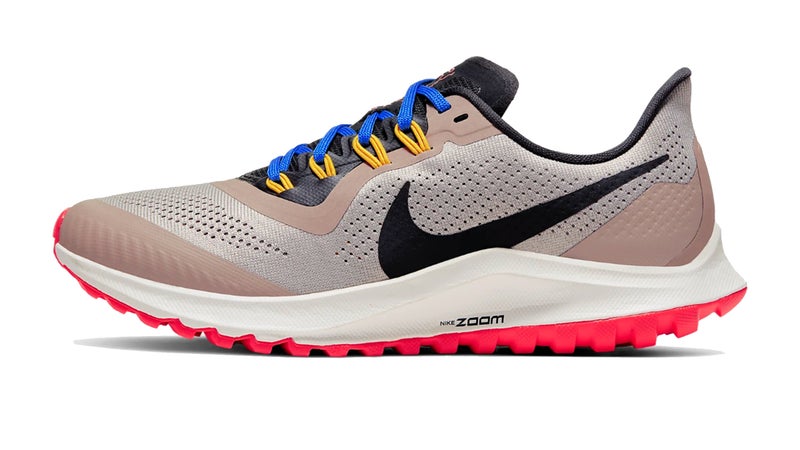
Best for Mellow Terrain
With Zoom Air cushioning and a beveled heel, the Pegasus 36 Trail runs as smoothly as the road version. What’s different are the toothy, multidirectional lugs that gripped dirt and gravel even in a rainstorm, and reinforcement in the upper that lent protection off-road without adding a lot of weight. In fact, the peppy ride prompted up-tempo runs and had us craving trail races. Without features like a rock plate and burly overlays, this Pegasus performs best on gentler trails (and the road on your way there). 10.3 oz (men’s) / 8.2 oz (women’s, pictured); 10 mm drop
��
New Balance FuelCell Rebel ($130)��
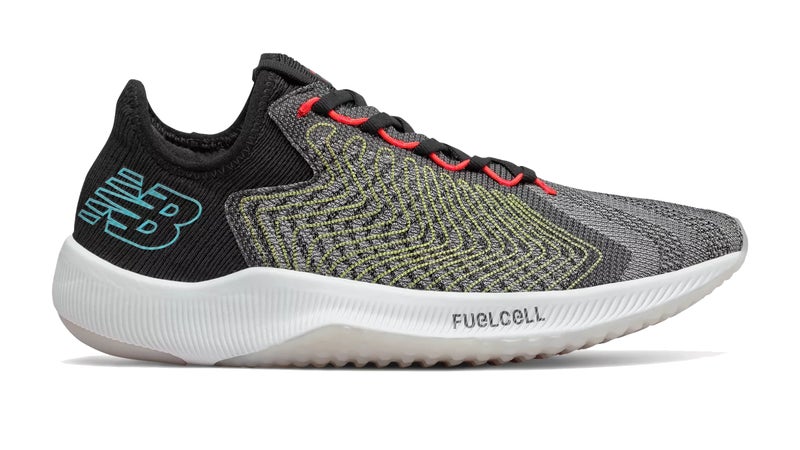
Best Race-Day Shoe
We were floored by how snappy and energetic the Rebel felt—a perfect short-distance racing shoe. Designed with input from New Balance’s middle-distance pros, it debuts a new EVA-based foam called FuelCell. NB tuned the shape, geometry, and density to create its highest-rebound midsole yet. Transitions were silky smooth, aided by a midsole that flares out laterally to provide a stable landing zone. Heel strikers should look elsewhere: the Rebel is purpose-built for mid- and forefoot strikers, as evidenced by the lack of outsole under the heel. 7.3 oz (men’s, pictured) / 6.1 oz (women’s); 6 mm drop
��
Brooks Cascadia 14 ($130)
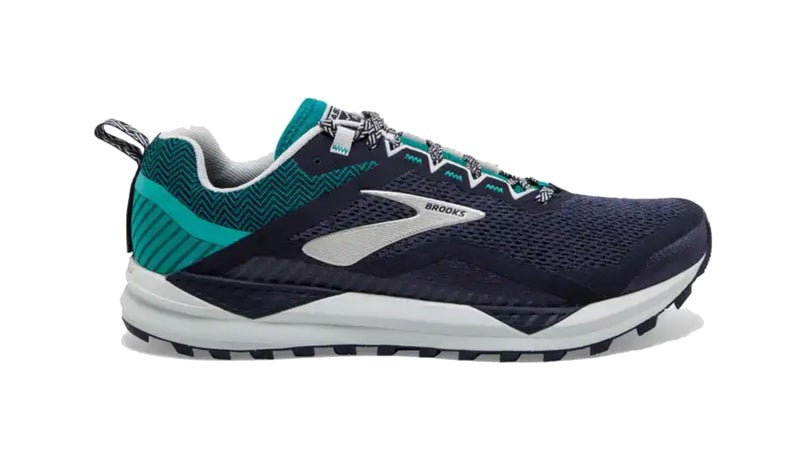
Best For Rugged Terrain
Tinkering with a top seller is risky business. So when Brooks announced a major overhaul of the Cascadia, we wondered how it would improve its tried-and-true all-terrain shoe. But the 14th generation—with improved stability, better traction, and a 10 percent reduction in weight—put our fears to rest. “It’s lighter, faster, and just a ton of fun, yet retains a stable, protective feel,” said one tester. The traction is phenomenal; another tester noted how much she enjoyed “confidence-inspiring grippiness ascending on dry or wet rock and changing trail conditions.” 10.7 oz (men’s, pictured) / 9.5 oz (women’s); 8 mm drop
��
361 Taroko ($110)
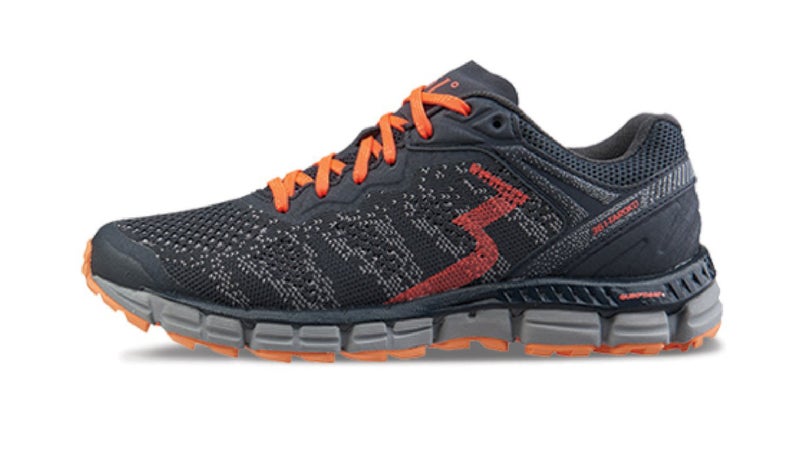
Best for Road and Trail
With the flexibility of a road model and lugs deep enough to grip dirt without feeling clunky on pavement, the Taroko does the work of two shoes. And somehow it fit all feet—wide, narrow, high and low volume—equally well. Credit the webbing on the inside of the upper, made of soft, light suede microfiber that hugs gently but securely, and a thin padded tongue that lays flat when cinched down. A layer of EVA and rubber sheathed in polyurethane (on top of a second layer of regular EVA) was springy while allowing enough feel for control off-road. 10.7 oz (men’s) / 9 oz (women’s, pictured); 9 mm drop
���ċ�ċ�ċ�ċ�ċ�ċ



